Training: skating stretching session with Ghizlane Samir
Did you know that a good muscle stretching influences a great part of your performance? There are lots of beneficial effects: better flexibility, less risks of injury, better recovery, more freedom of movement thanks to a greater joint mobility… Here are a few pieces of advice to stretch efficiently…
Par alfathor
The basic principles of stretching
 1) Warm-up
1) Warm-up
A stretching session never starts without having put the concerned muscles into action. Whoever says “stretching” means “warming up”. Then you limit the risks of muscle tear.
According to the season and the temperature of the place, the length of your warm-up may vary.
In order to be sure that your muscles are ready to be stretched, count at least twenty minutes of muscle stimulation. Hydrate frequently during the session, and in small quantities to limit the risks of injury.
2) Avoid “fits and starts”
When you start your session, do not stretch by fits, it is the best way to cause micro tears in your muscles. The stretching of your muscle should be gradual until the moment when you start feeling a sufficient stress. Avoid pain, even mild pain. Once that level reached, hold the position for 10 to 30 seconds. Never stretch an injured muscle without a doctor’s advice.
3) Be relaxed and de-stress
To be efficient, you should stretch in a state of relaxation: tensing is in contradiction with a good de-stressing of the muscle. Avoid apnea, breathe deeply, concentrate and “feel” the muscle that is being stretched.
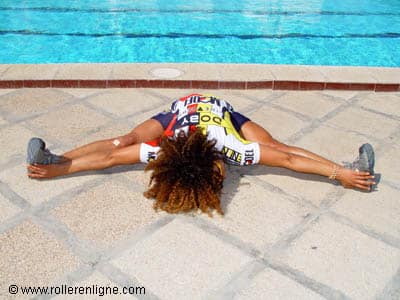 Stretching is not a competition. Flexibility varies from one day to another. Do not try to break your own record at each session, pay attention to your sensations.
Stretching is not a competition. Flexibility varies from one day to another. Do not try to break your own record at each session, pay attention to your sensations.
4) Work by “series”
Just like effort, you can stretch by intervals or series. You should better alternate stretching and resting phases. For example: 20 to 30 sec of stretching and 10 sec of rest. Count at least 5 series for each stretched muscular group.
5) What to stretch?
The principle is simple: you warm up the muscles you are going to use during the stretching session.
In skating, you should not limit yourself to the lower limbs only, but also include your back, and for sprinters, your upper limbs. Moreover, if you have workout sessions in your training program, your arms are probably concerned too.
Hamstring muscle stretching
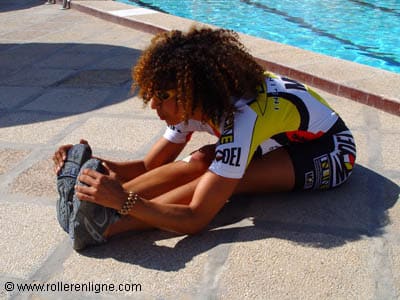 That 3-muscle group situated at the back of the thigh is often subject to muscle strain, pull or tear. It is stimulated a lot during effort. Do not neglect it: stretch it systematically!
That 3-muscle group situated at the back of the thigh is often subject to muscle strain, pull or tear. It is stimulated a lot during effort. Do not neglect it: stretch it systematically!
Stressed muscles:
- bicep femoris (short head)
- bicep femoris (long head)
- semi tendinosus
- semi membranous
First way of stretching your hamstring muscles
- sitting on the ground, with your legs straight forward
- gradually make your chest go down toward your knees
- your back should remain straight
- your pelvis is the one doing the movement
Second efficient stretching technique for hamstring muscles
- standing in front of a wall, a gate, etc.
- put a leg on the ledge
- gradually make your chest go down toward the knee of your straight leg, while keeping your back straight
- be careful not to put the foot too violently back to the ground in order to avoid injuries at the Achilles tendon.
A famous variant that should be avoided
You can do that drill standing and bending forward to touch your feet, but we would advise you not to, given that keeping your balance leads to a contraction of the muscle that is being stretched, which makes the stretching inefficient, even traumatising.
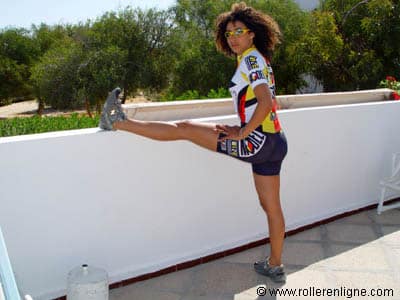 |
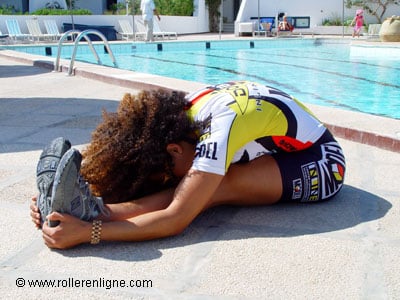 |
Stretching the quadriceps
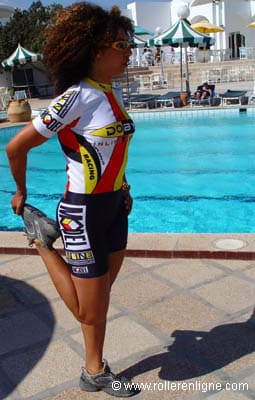 That 4-muscle group is at the front of the thigh. It is often called “thigh” by misuse of language, but it enables to locate it more easily.
That 4-muscle group is at the front of the thigh. It is often called “thigh” by misuse of language, but it enables to locate it more easily.
These muscles work a lot in skating, just as the hamstring muscles, because of the forward leaning stance.
Stressed muscles:
- vastus lateralis
- vastus medalis
- rectus femoris
- vastus intermedius
The “pink floyd” position
- standing on one foot
- grab your other foot, the heel on your buttock, be careful not to arch your back
- hold the knee in the axis without twisting it on the side
- your spine should remain straight during the stretching
- curve the lower back aud push the bum out (anterior tilt) to feel the stress on your quadriceps
Tip: you can lean on a gate or a wall to stabilize.
The lazy pink floyd
That drill may be performed in the same position but lying on the ground. Put your elbows on the ground to avoid arching your back. The foot is thus brought back to the side.
Stretching of the quadriceps with a front lunge
The quadriceps can also be stretched doing front lunge. The position is close to doing the splits.
- the back leg is quite straight and leans on the toes
- the front leg is bent and leans on the whole foot
- your back should remain straight during the whole drill
- in order to stretch the quadriceps more, you just have to straighten the back leg. In that position, the iliopsoas muscle is also stretched.
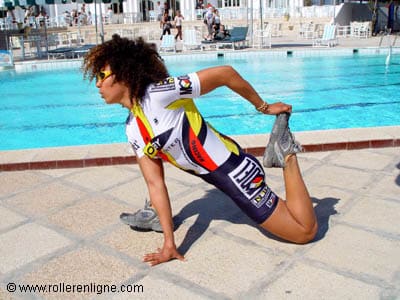 |
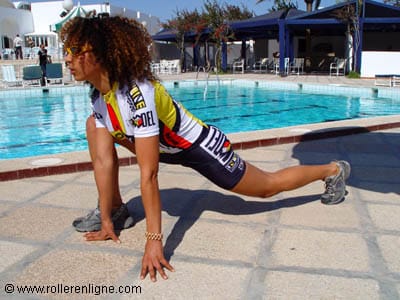 |
Adductor stretching
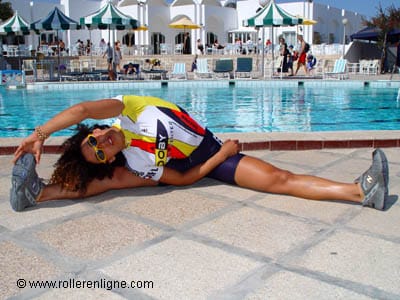 The adductors are in the inner part of the leg.
The adductors are in the inner part of the leg.
In skating, they are stimulated in stretching during the push phase of the stride, and in contraction when the leg goes back.
Stressed muscles:
- pectineus
- adductor brevis
- adductor longus
- adductor magnus
Stretching your adductors doing the splits
There are lots of solutions to stretch those muscles, the easiest consists in:
- sitting on the ground with your legs straight forward
- opening gradually the angle of your legs
- there comes a moment when you feel a slight stress. It is when you have to keep the position.
Warning: You should not open until it hurts to avoid damaging your muscle. On the picture above, Ghizlane leans sideways to grab her toes, which enables her to stretch the side of her chest (intercostal muscles).
Adductors stretching with a partner
- t
 he skaters are face to face in a stretching position
he skaters are face to face in a stretching position - one of them holds the legs of the other which are open thanks to his feet
- he exerts a gradual tension in catching the arms of the skater facing him and bringing them towards himself
- alternate skaters during resting phases
Stretching your adductors with your buttocks against a wall
- your legs straight up in the air against the wall with your back on the ground
- gravity exerts the stress on your adductors
Then you can add complementary stretching drills like, for example for the back muscles, in leaning sideways to touch your toes (cf. picture above).
Stretching your adductors in holding your ankles
Another quite simple solution consists in:
- sitting on the ground
- bending your knees and holding your toes like on the picture
- letting your knees gradually go down to the ground to stretch the adductors
For that drill as well as for all the others, take the time to breathe deeply in order to relax.
Stretching the gluteal muscles (bum muscles)
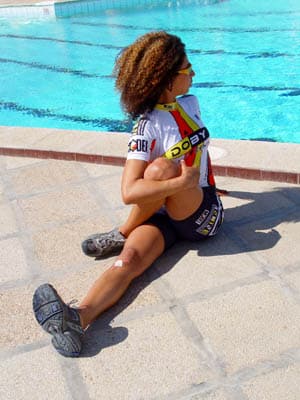 These are very powerful and voluminous muscles, especially the gluteus maximus.
These are very powerful and voluminous muscles, especially the gluteus maximus.
They are also stimulated a lot while skating. We often neglect to stretch them, whereas they are key actors of performance.
Stressed muscles:
- gluteus maximus
- gluteus medius
- gluteus minimus
- piriformis
Stretching with the leg straight forward
- sitting on the ground
- one leg straight forward
- the other leg bent and crossed over the straight leg
- put your foot next to your pelvis (cf. picture on the right)
Tip: you can bring your knee to the inside with your arm to improve the stretching of the gluteal muscles.
Stretching the gluteal muscles while lying on your back
- Lie with your back on the ground
- legs straight
- bring one of your knees to your chest
- hold it with your arms
- keep on breathing regularly and keep relaxed
- change legs
The “indian” stance
- sitting crossed-legs
- make your chest go down to your lower limbs while looking in the distance
- you can feel your gluteal muscles stretch progressively
- change legs
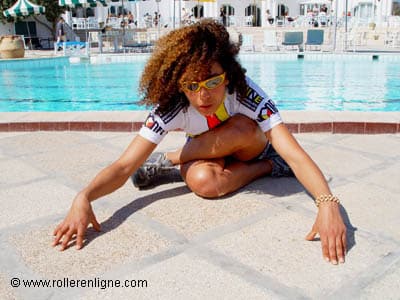 |
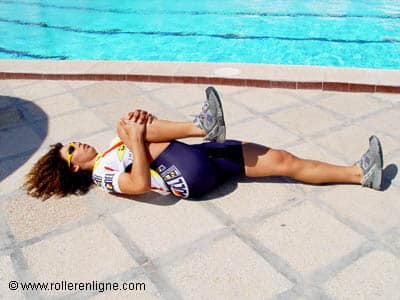 |
Stretching the calves (triceps surae)
 Stressed muscles:
Stressed muscles:
- gastrocnemius
- soleus
In skating, it is probably the muscle group that is the most subject to cramps. You should hydrate and get your fill of mineral salts to avoid cramps.
Stretching:
- find a wall or a pole
- face it
- put your foot against it at a 45 degree angle
- keep the heel on the ground
- lean your chest and your pelvis forward in order to feel a mild stress on your calf
- hold the position
- change legs
Stretching the upper limbs
It is not because you do skating that only your legs works!
A good relaxation of the upper limbs enables to improve your skating technique.
Stressed muscles:
- triceps
- back muscles
Triceps stretching
- put a bent arm up and behind your head (cf. picture)
- progressively bring the elbow toward the opposite shoulder in pulling it slowing down: you just have to grab your elbow
- you will gradually feel the back of your arm, the triceps
Stretching your back and your upper limbs
In order to start stretching your back and all the muscles stimulated by the movement of the upper limbs, you can:
- grab one of your elbows in front of you with the opposite arm
- bring it toward the opposite shoulder
Be careful not to turn your shoulders during that movement, otherwise the stretching will be inefficient. Your core should not move.
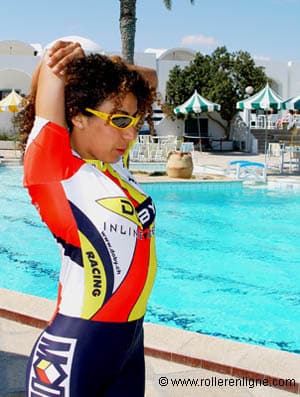 |
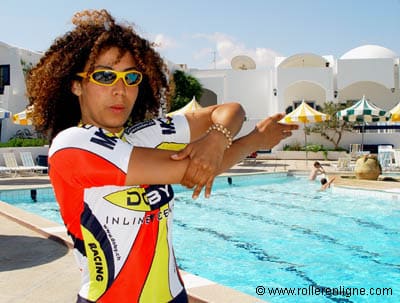 |
Back stretching
The snail
- bring your knees behind your head
- hold the position a few seconds before progressively unfolding the spine and going back to the lying position
- your head is in the axis of your spine
- it is said that you should “feel” one vertebra after another
Bringing your knees to your chest while lying on your back
If your back is a bit fragile, avoid the previous stretching. There is a softer variant:
- lie on the ground
- bring your knees to your chest without lifting your buttocks from the ground
- hold your knees against your chest with your arms
There you are!
Useful links
Impact of muscle stretching on health and sports practice
Translation: Chloé Seyres
Photos: Alfathor
Thanks to Ghizlane Samir

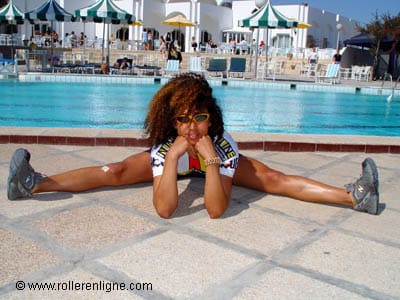 1) Warm-up
1) Warm-up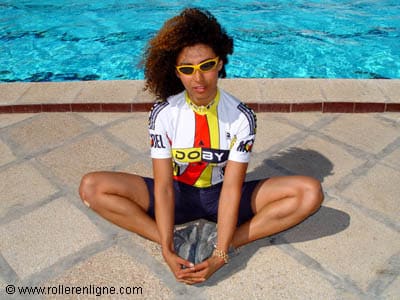
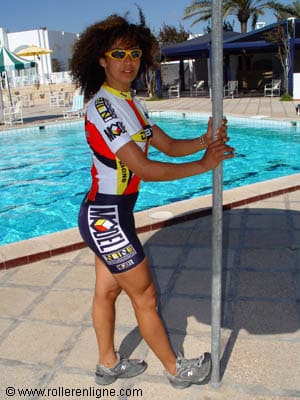 Stressed muscles:
Stressed muscles: